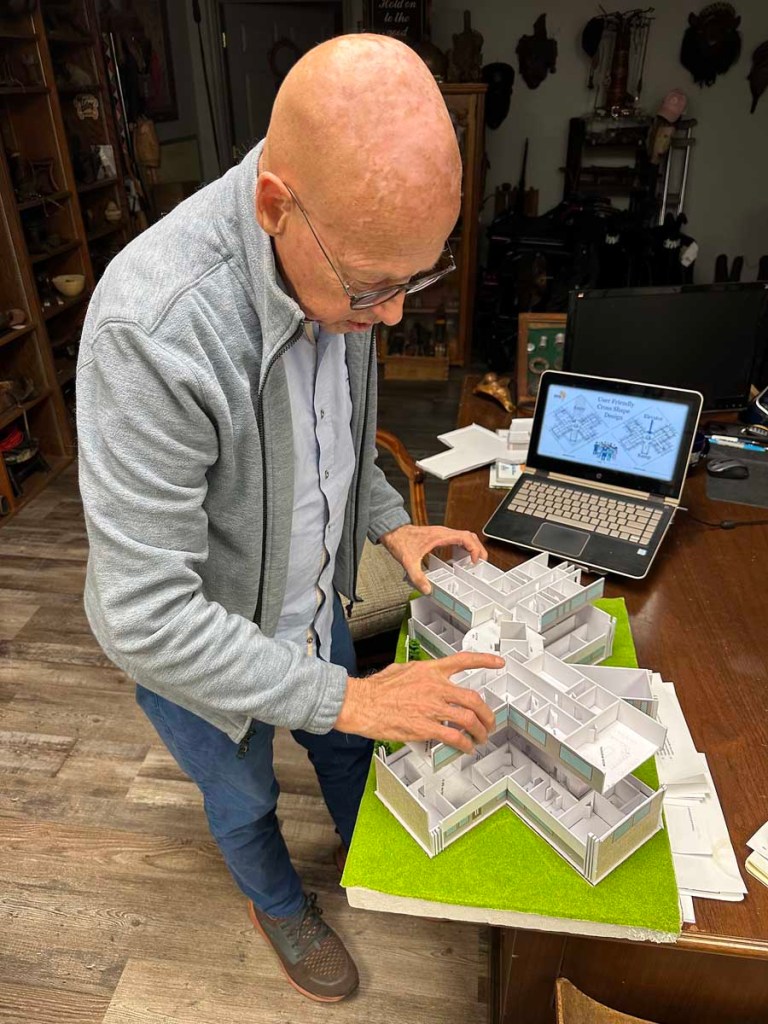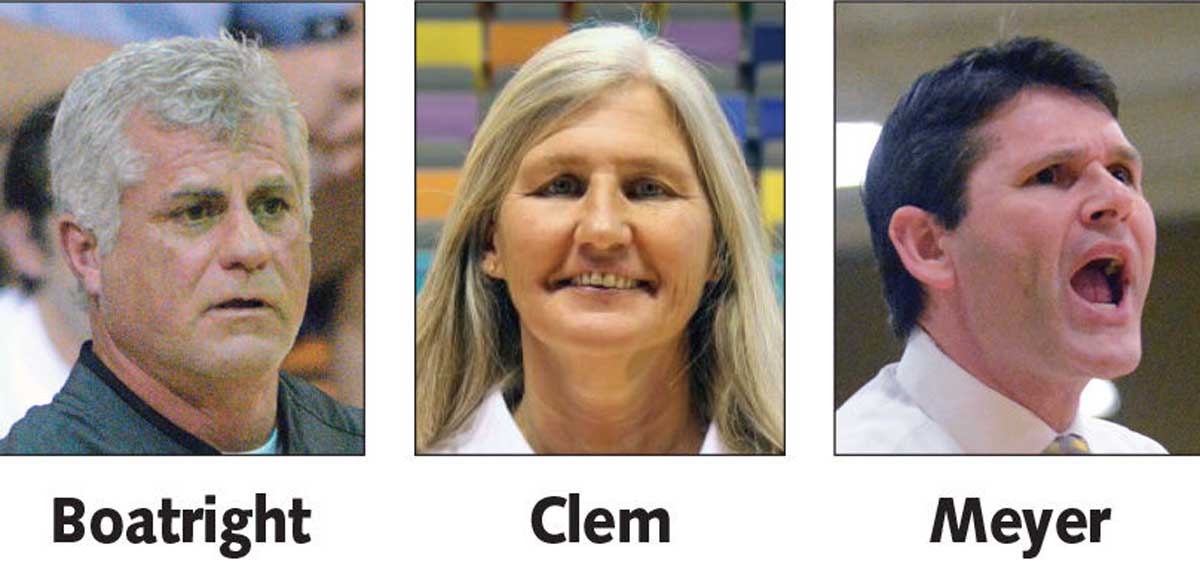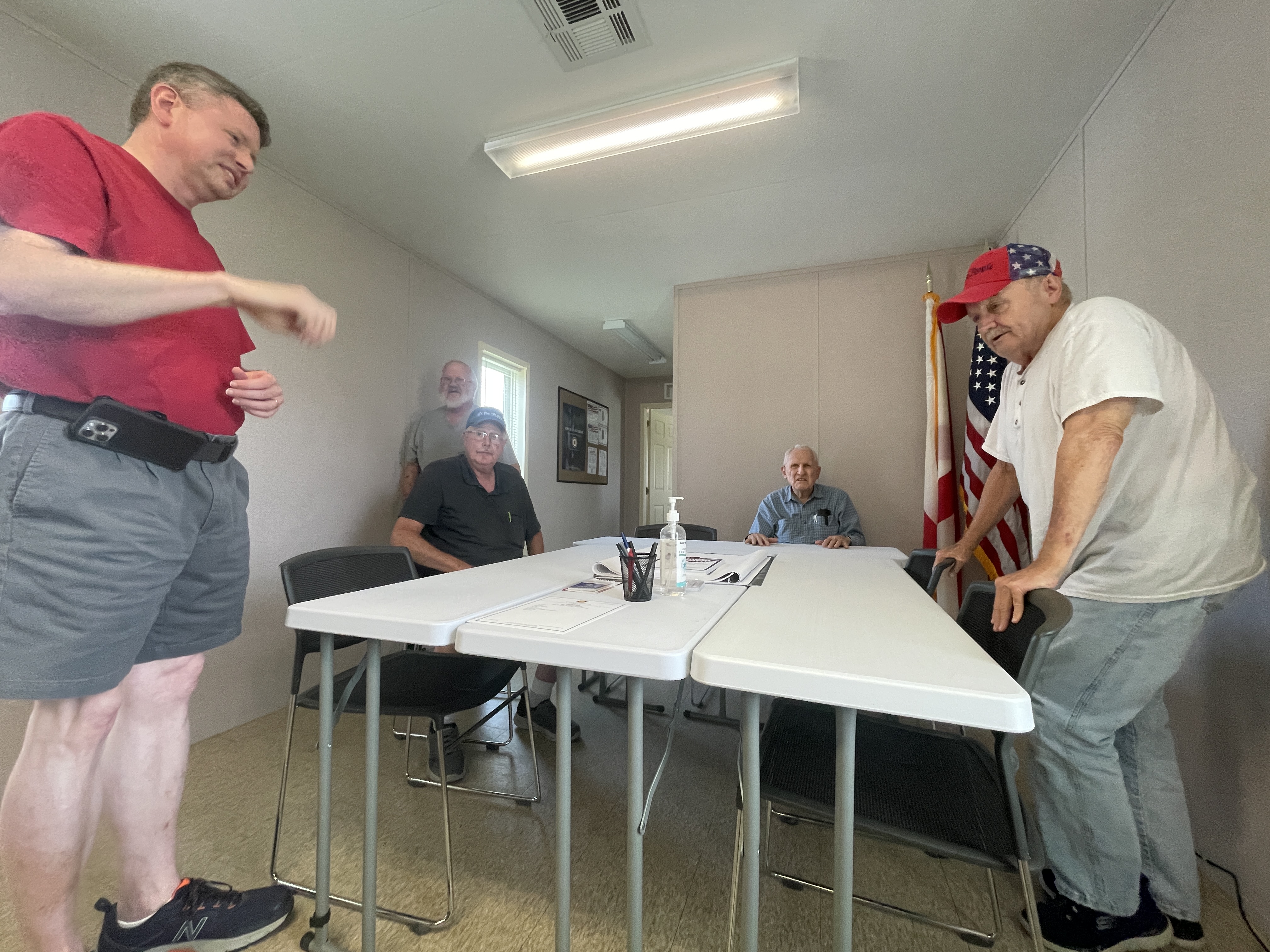Kenya Relief’s new ‘big idea’
Published 5:00 am Thursday, March 16, 2023

- Kenya Relief founder Steve James, pictured in his Cullman office alongside a structural model, gives a scaled-down tour of the new maternal and neonatal hospital the Cullman-based ministry is building at its outreach campus in Migori, Kenya. The $1.3 million, two-story facility is perhaps the ministry’s most ambitious overseas project yet, but James is determined to close the final funding gap while meeting the hospital’s construction timeline: ‘We really don’t want this project to stall,’ he says.
In the 22 years since its 2001 founding, Kenya Relief has more than lived up to its name. Through two short decades, the Cullman-based nonprofit has introduced medical services and social support networks in its Kenyan home base of Migori that were once unthinkable to the municipality’s nearly 100,000 residents.
Now Kenya Relief is taking on what may be its most ambitious outreach effort yet, and Steve James knows it. Framing the nonprofit’s next step as “The Big Idea” to donors and volunteers, the Kenya Relief founder and Cullman resident has come up with a plan — and already, it’s in motion.
That plan, said James, is to build and equip a new maternal and neonatal child hospital in Migori County, Kenya, located in the country’s southwestern region about 230 miles from the capital of Nairobi. Construction on the small but meticulously-designed facility is already underway: Workers broke ground on the $1.3 million project in July of last year.
In a part of the world destitute of the type of health care Americans take for granted, Kenya Relief’s singular presence has served as nothing short of a beacon. Marshaling the volunteer fly-in efforts of hundreds of U.S. and international health care professionals alongside the supportive assistance of first-world hospitals, businesses and academic institutions, the medical outreach — born from a personal tragedy in James’ own life — has performed countless life-changing (and often lifesaving) surgeries in the rural Kenyan city it now calls home, while establishing a permanent presence that enlists native Kenyans to steward its longevity and growth.
By American standards, the hospital will be modest in size, housing 65 beds within an 23,000 square-foot structure. But if Kenya Relief can achieve its goal, the facility and its available services would still ring familiar to western sensibilities, while offering measures of modern health care that are all but unheard of in Migori.
To say the multiethnic city and the rural environs that stretch out from its municipal center are lacking basic health services, is to understate a vital distinction between the first and third world.
Scanning the statistics provided by Kenya Relief, there are an estimated 4,000 deliveries, including more than 800 C-sections, each year in the county of Migori — a county with a population of around 1 million people. There’s only one gynecologist (and only one pediatrician) in all of Migori County, no electronic fetal monitors, no infant ventilators, no adult ICU beds, and only four high dependency unit beds.
Looking at Kenya as a whole, the contrasts are stark: Thirteen mothers die in childbirth for every 100,000 deliveries each year in the U.S., while in Kenya, that number leaps to 350. There’s a similar gap between the two nations’ infant mortality rate: In the U.S., 5.5 infant lives are lost during birth, while in Kenya, that figure balloons to 39.
On top of that, Migori County’s rates for both maternal and infant mortality exceed Kenyan averages overall. The local maternal mortality rate stands at 673 deaths for every 100,000 live births; while the infant mortality rate averages 50 infant deaths for every 1,000 live births.
The numbers suggest a narrative; once that’s a common fact of life across the third world: health care challenges begin at birth, if not at the moment of conception. Kenya Relief’s hospital, says James, is a way for the outreach to begin to address that reality.
“For 20 years, one of the most common questions I’ve gotten from the community there is, ‘When are you going to build a place where we can safely have our babies?’” says James. “It’s been a long time coming, so our ‘big idea’ is to build and furnish exactly that kind of place. It’s a very user-friendly design, and it offers more than 40 services to mothers and children.”
Laid out in a X-shaped pattern anchored by a central hub at is center, the hospital will feature dedicated service spaces along each spindle of its four “X” branches. Those will include a triage room, four examination rooms, four labor rooms, six pediatric beds, six more antepartum beds, a ten-bed neonatal intensive care unit (NICU), a semi-private 18-bed mother-and-child ward, one surgical C-section room, and an infant and child-focused playroom — and all of that’s just on the first floor.
The second floor will feature private patient beds, community education space, and behind-the-scenes support space for staff. Plans also call for a pair of private patient rooms, a separate area with 16 semi-private patient beds, two call rooms, and space for laboratory work — all but a health care luxury in Migori — utilized by Johannesburg-based Lancet Laboratories, a leading pathology service in Africa with whom Kenya Relief is partnering in the hospital effort. The upper floor also will house IT offices, a break room and separate pair of changing rooms for staff, administrative offices, a 30-seat classroom, a nutrition room, and space for telemedicine consultation.
When finished, the hospital will stand alongside other Kenya Relief success stories, each filling high-demand medical and community needs from the outreach’s Migori campus. Named for his late daughter, Brittney’s Home of Grace serves as the ministry’s orphanage. The Brase Clinic and Vision Center sits nearby, staffed by Kenyan health care professionals and targeted throughout the year by fly-in international teams for scheduled surgeries. Local children attend school at the ministry’s Kenya Relief Academy, run by locals with periodic missionary visits from volunteer U.S. educators.
The hospital, though, is something new, bundling a broad array of scarcely-available childbirth services into a compact footprint. James, by now adept at bringing disparate parties together around a common cause, hastens to point out that locating a neonatal hospital in what amounts to a health care desert doesn’t happen in a vacuum. Though the structure itself will cost an estimated $1.3 million, that’s just the beginning: Equipping the hospital and its staff to actually function comes with an even higher price tag.
“You not only need the building, but you need the equipment, too,” says James. “There’s a lot of specialized care and, really, a lot of technology going into it, and that requires millions of dollars’ worth of equipment.”
To that end, Kenya Relief has secured a $2 million commitment from Illinois-based nonprofit Hospital Sisters Health System and Hospital Sisters Mission Outreach (HSOM), the organization’s service arm targeting low-resource communities. Hospital stakeholders also have set up an online Amazon registry of supplies and equipment that allows donors to directly select items for shipment to HSMO, which plans to fill five shipping containers with donated goods destined for use at the new facility.
Though efficient in its design, the hospital won’t be an aesthetically desolate space. A separate nonprofit, the Foundation for Hospital Art (www.hospitalart.org), has contributed an estimated $55,000 in artwork to be placed around the hospital, with each featuring inspirational messages themed around wellness, community building, and voluntarism.
“Their motto is ‘Painting a Brighter World,’ it’s volunteer-based, and the paintings themselves really are beautiful,” says James. “When you see what they do and how it enriches the experience for patients and the atmosphere for staff, you begin to get a real vision of what this is going to look like.”
With plans in place and construction underway, Kenya Relief is about halfway home toward its $1.3 million construction goal, with James hoping to cross the funding finish line by June of this year.
“We really don’t want this project to stall,” he says. “We’ve raised about $750,000, and we’ve gotten some big donors to help get us there, but now we’re at that point where we need one or two more. So much of our support has come from the generosity of some very major stakeholders all across the U.S. — all across the world, really — but we’d absolutely love for some of that support also to come from right here in Cullman.
“Throughout this project, we’ve been looking to partner with people and organizations who have the same shared values as we do. and I know there are people and groups here who, once they know a little bit about what we do, would embrace those kind of values.”





